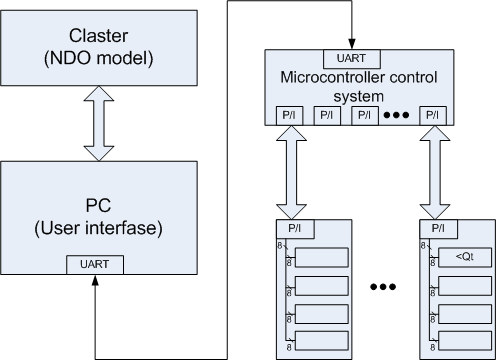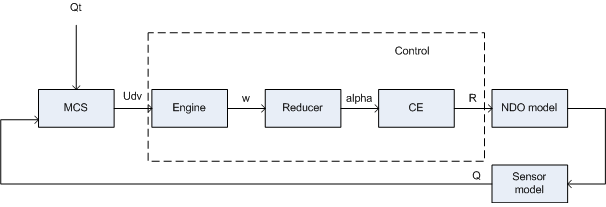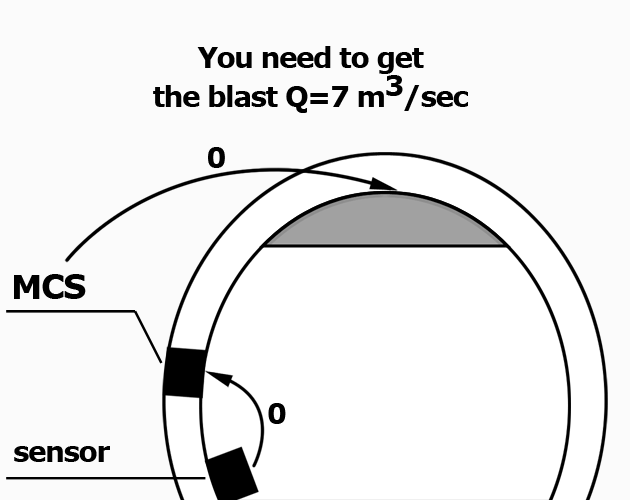Abstract
Content
- Introduction
- 1. Relevance of the topic
- 2. The purpose and objectives of the research, the expected results
- 3. Overview of Researches and Developments
- Conclusion
- List of sources
Introduction
The main part of the current researches is not go without modeling the processes. It is used not only in mathematics, physics, economics, but also in chemistry, and even biology. In the first place simulation is used to save money spent on research, as it allows to estimate the results of the work, to identify errors before its immediate implementation.
Seminatural simulation – is the creation of a system consisting of two parts. The first part is a real, natural object that functions fully. The second part – a model that runs on a computer. This approach allows to test the complete system in the absence of natural conditions. The model in a such system should create full visibility of the actual conditions of the system under test.
1. Relevance of the topic
Seminatural model provides the most complete representation of the system under test, allowing you to fine-tune it, fix bugs. Most of the microcontroller control system (MCS) work with expensive dangerous objects, in this case, the developer is unable to complete validation of such a system. On the other hand, before putting the system into operation, its job has to provide the required level of management of the facility. All of these issues are solved with seminatural simulation.
Master's project is devoted to the actual problem of seminatural simulation, as wall is considered the idea of parallelism and their implementation by using the MPI (Message Passing Interface) library.
2. The purpose and objectives of the research, the expected results
The aim of the study is to develop a management system for network dynamic object with distributed parameters (NDODP) and test it using the seminatural simulation.
The main research problems:
- Analysis of methods for the design of microprocessor control systems;
- Ideas of parallelization NDODP model;
- Analysis of methods of seminatural simulation;
Object of research: The microprocessor control system.
Subject of research: Seminatural modelling.
As part of the master's work is to get the actual scientific results in the following areas:
- Cluster implementation of NDODP model;
- Design of microcontroller control system;
- Design dialogue subsystem;
- Creating a simulation to test the microcontroller control system.
3. Overview of Researches and Developments
Working with network models of dynamic objects began two years ago as part of a group project for a corse "Parallel Programming". During this course project was designed a model of network dynamic object with distributed parameters. This project used the results of the course project, but in the future will be introduced a model with distributed parameters, th will give more realism and detail.
The developed system consists of 3 parts:
- Dynamic model of the object;
- User interface and the connection of all parts of the system;
- Microcontroller control system.
The structure of the system is shown in figure 1.

Figure 1 – Structure of the control system of air currents
This structure, make clear that the microcontroller control system – this is the real, natural object, and the seminatural model, that is implemented on a cluster, creating full visibility of the actual working conditions. The user interface of the system is used for:
- Statement of different tasks for cluster (changing the structure, placement of sensors, changing the parameters dynamic object);
- Configuration a control system (system configuration, setting the initial values);
- This program is also used for client communication model and microcontroller control system.
The network dynamic object is a graph with controls. An example of such a graph is presented in figure 2.

Figure 2 – Graph of the network dynamic object
(Q – air streams, В – nodes, Н – fan, Р – controls)
Controls in this system are split into three groups:
- Basic controls – controls that located in those branches, which require air flow control (P1 - P4);
- Group regulators – operate if the main regulators can't cope with their task (P5);
- Fan regulators – operate in case when the current power of fans can not achieve the desired level of air flow (P6).
Basic and group controllers have the same structure and are composed of three units connected in series. Controller structure is shown in figure 3.

Figure 3 – Controller structure
(MCS – microcontroller control system, РО – control element, SDO – network dynamic object)
Fan Regulators are more simple, the basic principle of their work is to increase the power. It is required if the basic and group regulators can't ensure the desired air flow.
The regulator, which controls the MCS – is curtain that under the influence of a DC motor block the ventilation tunnel and thus controls the flow of air. The idea of regulation is presented in figure 4.

Figure 4 – The idea of controlling the flow of air
(animaton: 11 frames, 3 cycles of reiteration, 46.4 Kb)
In this system, the sensor measures the current flow of air and sends the value to MCS. The control system compares the sensor with a desired value of the air flow. If the value is less than the required – system sends -380, more – +380, equal &ndash 0. The value of the voltage sends to the DC motor, at 380 V. curtain falls, at -380 – rises, equal – immovable.
Conclusion
Master's project deals with actual scientific testing task of management tool with a seminatural model. As part of the research carried out:
- Designing the structure of the air flow control system.
- The implementation of MCS on the hardware.
- Have done experiments for testing MCS with seminatural model.
Further researchs is focused on the following aspects:
- Transfer model of the network on cluster.
- The introduction of the model with distributed parameters.
- Creating a simulator for testing MCS for network dynamic object.
Master's project is not yet complete. Final completion: December 2013. Full text and materials could be obtained from the author or his manager after that date.
List of sources
- Святный В.А. Диссертация – Моделирование аэрогазодинамических процессов и разработка систем управления проветриванием угольных шахт. Донецк, 1985, 408 с.
- Святный В.А. Параллельное моделирование сложных динамических систем // Моделирование – 2006: Международная конференция. Киев, 2006г. – Киев, 2006. – С. 83–90.
- Абрамов Ф.А., Фельдман Л.П., Святный В.А. Моделирование динамических процессов рудничной аэрологии. – Киев: Наукова думка, 1981. – 284 с.
- Anoprienko A.J., Svjatnyj V.A., Braunl T., Reuter A., Zeitz M.: Massiv parallele Simulationsumgebung fur dynamische Systeme mit konzentrierten und verteilten Parametern. 9. Symposium ASIM'94, Tagungsband, Vieweg, 1994, S. 183 – 188.
- Кушнаренко В.Г. Разработка и исследование подсистемы параллельных решателей уравнений распределенной параллельной моделирующей среды (РПМС) [Электронный ресурс] / Портал магистров ДонНТУ, 2011 – http://masters.donntu.ru/2011/fknt/kushnarenko/diss/index.htm
- Хамылов А.А. Разработка и исследование подсистемы виртуальных параллельных моделей РПМС [Электронный ресурс] / Портал магистров ДонНТУ, 2011 – http://masters.donntu.ru/2011/fknt/khamylov/diss/index.htm
- Мирошниченко К.В. Разработка и исследование подсистемы топологического анализа сетевых динамических систем как объектов моделирования [Электронный ресурс] / Портал магистров ДонНТУ, 2011 – http://masters.donntu.ru/2011/fknt/myroshnychenko/diss/index.htm
- Schmidt B. Simulationssyteme der 5. Generation – SiP, Heft 1, 1994, S. 5–6.
- Молдованова О.В., Проблемно ориентированная параллельная моделирующая среда для сетевых динамических объектов с распределенными параметрами / О.В. Молдованова – Диссертация на соискание ученой степени кандидата технических наук – Донецк : ДонНТУ, 2005.
- Galasov R.A., Lapko V.V., Moldovanova O.V., Pererva A.A., Rasinkov D.S., Svjatnyj V.A., Baer W.: Das Simulations- und Service-Zentrum fuer automatisierte Grubenbewetterungsnetze / Simulationstechnik 14. Simposium in Hamburg, September 2000.
